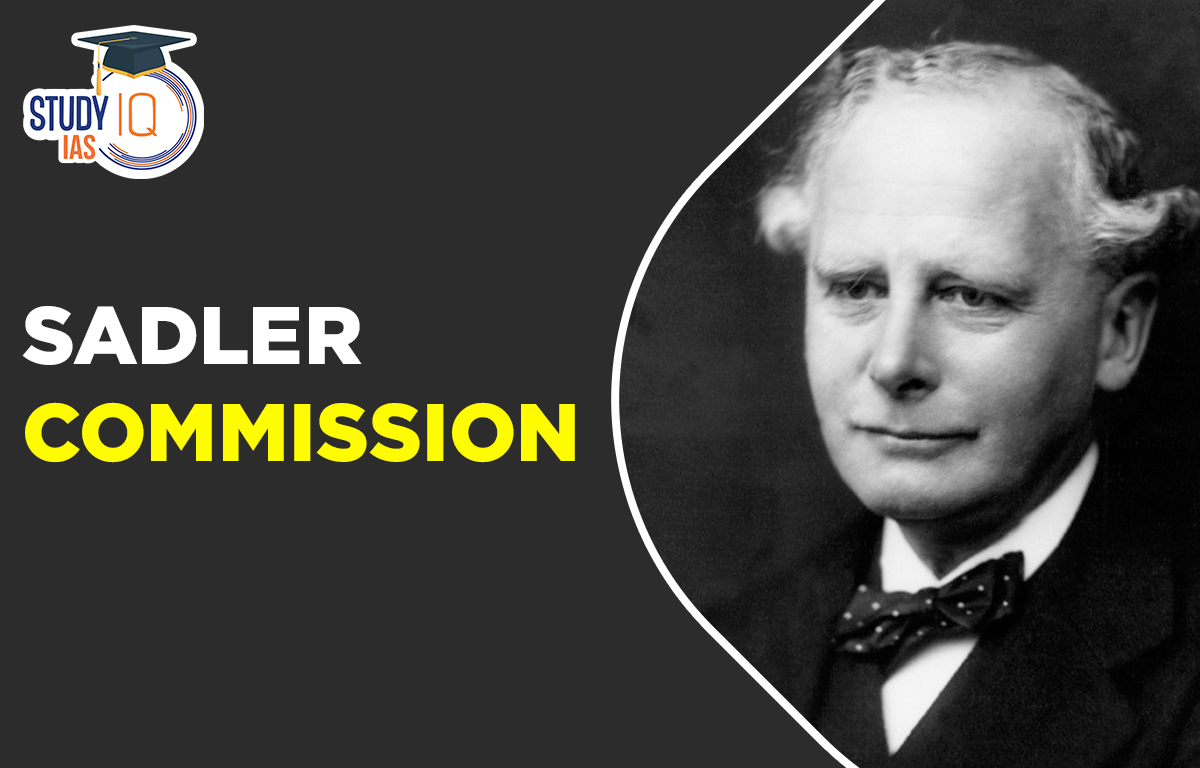Table of Contents
The Sadler Commission, also known as the Calcutta University Commission, was established by the British government in 1917 to investigate and make recommendations on the problems and future development of the University of Calcutta. The commission was named after its chairman, Sir Michael Sadler.
Sadler Commission
The Calcutta University Commission, or Sadler Commission, was established in 1917 under chairman Michael Sadler to investigate the state and future of Calcutta University and broader educational policies. Addressing all educational levels from preschool to higher education, the commission emphasized improving secondary education as a prerequisite for enhancing higher education. The commission’s 1919 report offered comprehensive recommendations to address major issues in Bengal’s higher education system. This exploration of the Sadler Commission 1917-19 is essential for UPSC exam preparation.
Sadler Commission History
Establishment: The Sadler Commission was formed following the Montagu-Chelmsford Reforms and the increased emphasis on education as a tool for social and political change in India. The commission started its work in 1917 and submitted its report in 1919.
Context: The commission was set up in response to the growing demand for higher education in India and the recognition that the existing system, especially at the University of Calcutta, was inadequate to meet these needs.
Sadler Commission Objectives
The Sadler Commission 1917–19 was established to look into the state and future of Calcutta University. to concentrate on the topic of effective policy in respect to the posed subject. To free universities from the responsibility of secondary education so they can concentrate only on higher education. The main objectives of the Sadler Commission were:
- To assess the conditions and functioning of the University of Calcutta.
- To recommend measures for improving the university’s administration and curriculum.
- To suggest ways to better prepare students for higher education.
Sadler Commission Recommendations
The Sadler Commission made several key recommendations:
- Intermediate Education: It proposed the separation of intermediate (high school) education from university education, suggesting the establishment of intermediate colleges for students before they entered universities.
- University Administration: It recommended reforms in university administration to make it more efficient and responsive, including the establishment of a more inclusive and representative university court and senate.
- Courses and Examinations: The commission advocated for a more flexible and diversified curriculum, moving away from the rigid and classical courses to more practical and modern subjects. It also suggested reforms in the examination system to reduce rote learning and encourage critical thinking.
- Teacher Training: Emphasis was placed on the professional training of teachers and the improvement of their working conditions.
- Research and Postgraduate Studies: The commission stressed the importance of promoting research and advanced studies in Indian universities.
- Women’s Education: It highlighted the need to expand educational opportunities for women and integrate them into the mainstream education system.
Sadler Commission Impact
The recommendations of the Sadler Commission had a significant impact on the Indian education system:
- Intermediate Colleges: The establishment of intermediate colleges helped in easing the pressure on universities and provided a more focused environment for pre-university education.
- Curriculum Reforms: The diversification of the curriculum led to the inclusion of more practical and contemporary subjects, which better prepared students for modern professions and societal needs.
- Administrative Changes: The suggested administrative reforms improved the efficiency and responsiveness of university governance.
- Teacher Training: Enhanced focus on teacher training improved the quality of education delivery.
- Expansion of Higher Education: The emphasis on research and postgraduate studies contributed to the growth of higher education in India, laying the foundation for future advancements.
- Women’s Education: The recommendations helped in the gradual integration and expansion of women’s education in India.
Sadler Commission UPSC
The Sadler Commission, or Calcutta University Commission, was established in 1917 under Sir Michael Sadler to examine the state and future of Calcutta University and suggest educational reforms in Bengal. The commission addressed all levels of education, from preschool to higher education, emphasizing that improving secondary education was crucial for enhancing higher education. In its 1919 report, the commission recommended separating intermediate education from university education, diversifying the curriculum, reforming the examination system, and promoting women’s education. These recommendations laid the groundwork for significant educational reforms in India, making the Sadler Commission essential for UPSC exam preparation.


 Nagari Pracharini Sabha Revival: Backgro...
Nagari Pracharini Sabha Revival: Backgro...
 Ryotwari System in India, Features, Impa...
Ryotwari System in India, Features, Impa...
 Battle of Plassey, History, Causes, Impa...
Battle of Plassey, History, Causes, Impa...





















